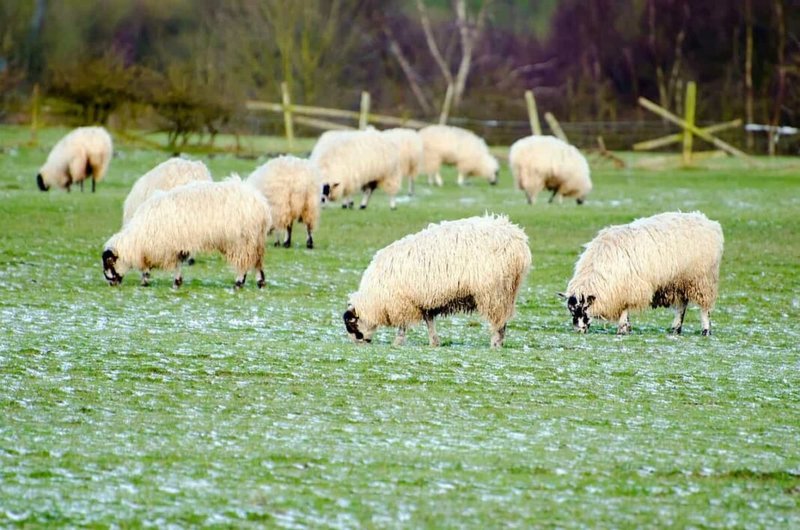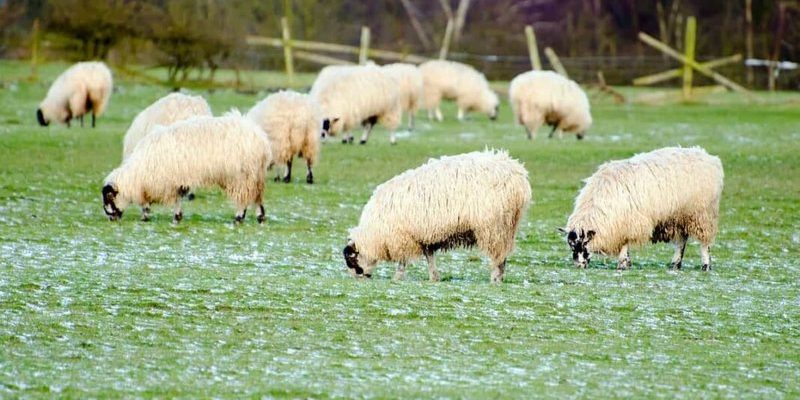
Sheep are herbivores, meaning their diet primarily consists of plants. They graze on various grasses, clovers, and other vegetation. They are also prey animals, which means they have to be smart about where and how they eat. You might wonder how a creature that looks so docile maintains its survival strategy against predators. Well, here’s the thing: sheep have developed unique ways to navigate their environment, both when it comes to what they eat and how they stay safe. Let’s dive deeper into their world and uncover the intricacies of their diet and hunting strategies.
Understanding Sheep Diet
Sheep are picky eaters with a specific diet tailored to their needs. They primarily consume grasses, legumes, and other forages. Since they’re ruminants, their stomachs have four compartments that help them break down tough plant materials. Think of it like a multi-step recycling plant for digesting food. They initially chew their food, swallow it, and then bring it back up (a process called rumination) to chew it some more. This helps them extract the maximum nutrients, which is essential for their overall health.
Their grazing habits are influenced by seasonality. During spring and summer, fresh green grasses and clovers are abundant. In winter, their diet shifts to dried grasses and shrubs. This is important, as it showcases their adaptability. For instance, if you’re in a snowy area, you’ll find that sheep scratch the snow away to reach grass underneath. They’re not just grazing; they’re working hard to find food when it’s not readily available.
Additionally, sheep can be quite selective about their food. They have a natural preference for certain plant species, which can vary by region. Some sheep might even enjoy snacking on flowers or shrubs, adding variety to their diet. Understanding their dietary preferences helps farmers and shepherds provide better care for their flocks, ensuring they stay healthy and productive.
Hunting Strategies: What Do Sheep Need to Avoid?
While sheep might not be the ones doing the hunting, they certainly have to avoid being hunted! These animals are a favorite meal for predators like wolves, coyotes, and mountain lions. To survive, sheep use several clever strategies to evade these threats. One key strategy is their strong flight instinct. When they feel danger, their first reaction is to run. They can quickly flee to safer areas, putting distance between themselves and potential predators.
Another important aspect of sheep behavior is their strong herd mentality. They typically stay close together in groups, which provides safety in numbers. When a predator approaches, the group dynamics come into play. They often scatter in different directions, which can confuse the predator, making it harder for it to target a single sheep. You might say that there’s safety in numbers, and for sheep, this couldn’t be more true.
Moreover, sheep have keen senses that help them detect danger. Their large eyes allow them to see a broad field of vision, which is crucial for spotting predators approaching from different angles. Although their vision isn’t perfect, they can detect movement well and alert the rest of the flock. Here’s the thing: these animals might seem simple, but their social structure and awareness truly highlight their wisdom.
Risk Management: How Do Sheep Choose Their Feeding Grounds?
Choosing where to graze is a strategic decision for sheep. They often select areas that offer both food and safety. Typically, they prefer open fields where they can see their surroundings, making it easier to spot any approaching danger. However, they also look for places with ample cover, like bushes or trees, where they can quickly escape if needed.
In addition to their environment, sheep also pay attention to the presence of potential predators. If they’ve seen predators in a specific area recently, they may avoid grazing there until they feel safe again. This behavior requires quick decision-making and awareness, demonstrating that sheep are much more than just passive grazers. Their survival relies on a blend of instinct and experience.
Farmers and shepherds can facilitate this behavior by managing grazing lands. Creating open spaces while ensuring some areas have cover can help sheep feel secure while they feed. It’s all about balancing their need for food with their instinct to stay safe.
Seasonal Changes and Adaptations
Seasonality plays a significant role in the diet of sheep, as different plant species become available throughout the year. In spring, when grass and flowers bloom, sheep can feast on fresh, nutrient-rich forage. This is when they gain weight and prepare for breeding. However, as summer progresses into fall, the availability of these resources shifts.
As the weather cools and winter approaches, sheep adapt their feeding strategies. They often become more selective, snacking on the remaining dried grass and shrubs. In some harsher climates, they might even learn to dig through the snow to uncover hidden pastures. This adaptability is a crucial survival mechanism, as changing diets can impact their health and reproductive success.
Farmers also play a vital role here by rotating grazing areas and ensuring that pastures are well-maintained. This helps keep the sheep healthy and ensures that the land can recover from grazing pressure. It’s a symbiotic relationship, where both sheep and the environment benefit from careful management.
The Role of Foraging Behavior in Sheep Survival
Foraging is another critical aspect of sheep survival. They spend a significant portion of their day grazing, often up to 10 hours! During this time, they engage in various behaviors that help them find food. They might move slowly across a field, nibbling on patches of grass, or more actively seek out new areas to explore.
Interestingly, sheep are known to be social foragers. This means they learn from one another. If one sheep discovers a tasty patch of clover, others quickly follow suit. This social learning is crucial for their survival as it allows them to share knowledge about food sources within the flock.
Here’s the thing: foraging isn’t just about filling their bellies; it’s a way of maintaining social bonds within the flock. The more they interact while feeding, the more cohesive their group becomes. This strong social structure is vital for protecting each other against predators and ensuring the flock’s overall health.
In conclusion, the diet and hunting strategies of sheep are intricately linked to their survival. These gentle animals might seem unassuming, but they exhibit remarkable adaptability and social behavior. From their selective grazing habits to their strong instincts for avoiding danger, they demonstrate an incredible balance between feeding and staying safe.
So next time you see a flock of sheep grazing on a hillside, take a moment to appreciate the complex dance of survival happening right in front of you. They’re not just munching away; they’re engaging in a delicate balance of instincts and social behaviors that have evolved over generations. Understanding these aspects not only deepens our appreciation for sheep but also highlights the intricacy of nature as a whole.

